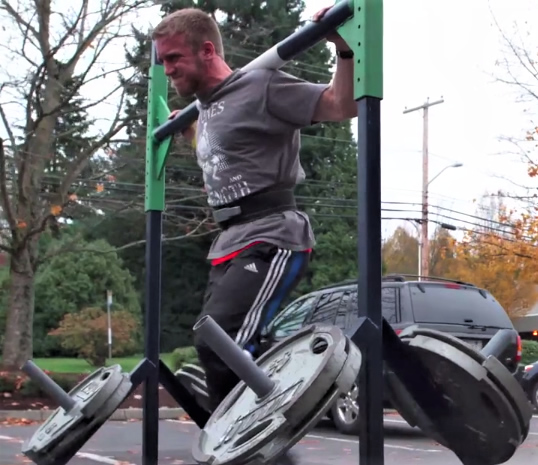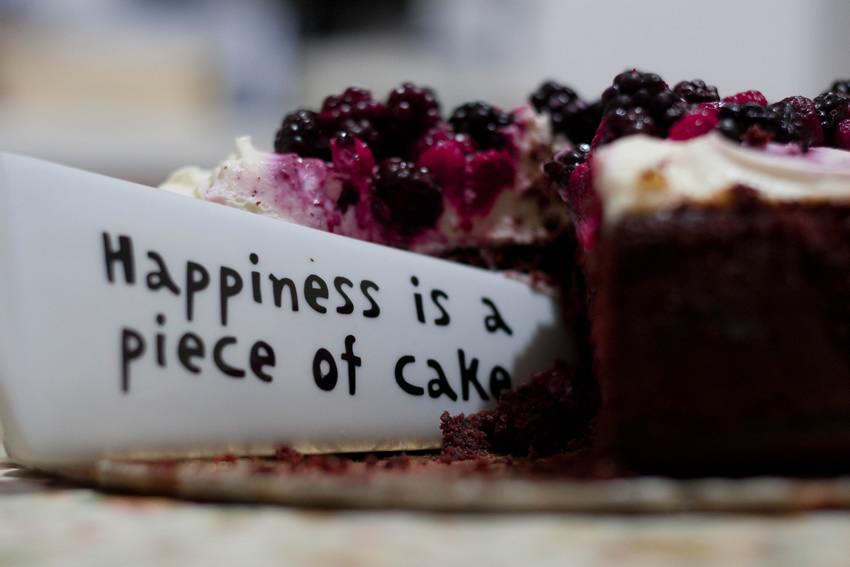
A few years ago, at the end of one of our training sessions, UFC fighter Demetrious Johnson (DJ) told me a story about the day he spent installing rain gutters with his father-in-law. DJ thought he was going to learn the tricks of the roofing trade, but what he learned instead was a powerful mantra—a mantra that everyone in my gym now recites every day—that helped catapult him to champion status and changed his life forever.
This mantra, which I’ll share below along with four other strategies for getting great results, also serves as a crucial reminder: When it comes to making progress in the gym (or in life), consistency is more important than intensity.
What 10 hours on a blazing hot roof can teach you about life.
At the time of DJ’s single-day roofing apprenticeship, there wasn’t even a flyweight division in the UFC. Which meant that DJ was a relatively unknown amateur fighter who, like most of his peers, worked a 9-5 job by day and trained MMA at night.
One day, DJ’s father-in-law, Allen, invited DJ to tag along with him to learn the gutter business in which he’d worked for the last 40+ years. Maybe it would be a good job for Demetrious to fall back on, just in case the whole fighting thing didn’t work out.
The day started at 5am with a two-hour drive to the job site. At the site, Allen told DJ to climb up on the roof. For hours on end, DJ took measurements, Allen cut the gutters to fit, and they both hauled them up on the roof to install them.
Piece by piece. Foot by foot. Hour after hour.
After almost nine straight hours of climbing up and down the roof in 90°F heat, they got in the truck for the two-hour drive back home. Exhausted, DJ looked across to the driver’s seat at Allen.
“You do this every day?!” he asked.
Stone faced, Allen replied: “Every fucking day. That’s life.”
And from that point on, whenever the daily grind of training was getting to him—whenever he got tired, whenever he wanted to half-ass his workouts, whenever he wanted to skip a training day—DJ would remind himself of what Allen had said.
Every. Fucking. Day.
And the mantra “EFD” was born.
Consistency (not intensity) is the difference between reaching your goals and failing.
The truth is that life is often a grind. Fitness is no different. To reach your goals, you can’t do the right things some of the time—you have to do them all the time.
EFD.
The lesson DJ learned on the roof that day is this: consistency is king. The people who are the most successful are the ones who understand that life is EFD. They know they’ll never get to the top if they don’t consistently put in the work, every single day.
The problem is that far too many people lack consistency. Instead, they live and die by intensity.
They pound themselves in the gym with intervals. They bury themselves under heavy weight. They go into “beast mode” and demolish their body.

Two steps forward, one step back is not the right way to approach training.
The truth is that when you use too much intensity too often, your body fights back and your consistency suffers. Think of a classic example of this approach: dieting during the week and binge-eating on the weekend.
How many people do you know that can’t understand why they’re not losing weight when they’re dieting hard five days a week, but then eating an extra 3,000 calories on the weekend?
Of course, I’m not opposed to intense training or dieting. But I do think it’s abused. Most of us fail to understand that a slow and steady approach—EFD—is far more important than how many intervals we can cram into 20 minutes.
When it comes to fitness, consistency is essential. But how do you harness the power of EFD and actually stay consistent with your training?
Here are four key strategies I use.
Strategy #1: Remove the need for self-discipline. (Or, don’t put a cookie in the cookie jar.)
My good friend and fellow fitness buff, Nate Green, recently wrote an article on this topic. The idea is that self-discipline is a limited resource that we easily exhaust throughout the day. However, we can avoid the need to tap into our discipline reserves by eliminating the temptation. (Nate calls this going into “Nuclear Mode”.)
Think of this way: If you put a cookie in a jar and set it on your kitchen counter, you’re likely going to have to use some willpower (or self-discipline) to force yourself to not eat the cookie. However, if you never put a cookie in the jar, well, then it’s impossible to eat a cookie.
You’ve removed the need to have self-discipline (not eating a cookie) by removing temptation (not having a cookie to eat). This is a simple yet powerful strategy.
If you’ve been struggling with consistency—in dieting, working out, meditating, whatever—my guess is that you know exactly what causes you to stumble. Pinpoint those things, bite the bullet, and find a way to remove them or structure your day around them. That way you don’t have to choose.
Being consistent doesn’t require robotic willpower. Instead, it’s far more essential that you understand what makes you fail, account for it, and plan around it.
But what about cheat days?!

I’m going to address the elephant in the room, because I know you may be thinking, “…but what about cheat days?” Does having a scheduled break from dieting actually make it easier to adhere to your eating plan in the long run?
I know from personal experience that cheat days tend to get a little out of hand (ok, maybe really out of hand). I’m not alone in this, either.
A study by Rena Wing and Suzanne Phelan looked at the factors associated with successful long term weight loss, one of which was diet consistency (2005). They found that study participants who did not significantly vary their diet dury the week were 1.5 times more likely to maintain weight loss within a 5-pound window over the following year than participants who ate more strictly on weekdays than on weekends.
In other words, the people who ate virtually the same every day—EFD—found it much easier to maintain their weight loss.
Of course, having a relatively steady diet is probably not what you dream about doing. We all want to be the kind of person who can eat whatever we want, whenever we want, and then make up for the damage by training our asses off in the gym.
But we have to be honest with ourselves: Is that approach really healthy or sustainable? Maybe instead of the strict-then-cheat cycle, we try to find a way to have a consistently better diet without over-indulging or depriving ourselves unnecessarily.
Strategy #2: Use a wide range of intensities. (Or, pick some other fun stuff to do.)
Sometimes monotony is at the heart of why we stop doing things we know are good for us.
“I know I should go to the gym, but I can’t take another minute on the rower.”
“I shouldn’t have carbs right before bed, but I can’t stand the idea of another chicken breast.”
Variety is your best friend. Let it in. Aside from the mental vacation you get when you stray from your norm, there are also real physiological reasons why you should use a variety of intensities and avoid the mentality of high intensity all the time.
Research by Foster et al examined the effects of two HIIT and one steady state protocol on anaerobic/anaerobic capacity as well as overall training program enjoyment (2015). Study participants completed 24 training sessions over an 8-week period. While all 3 groups significantly increased aerobic capacity, the differences between the groups were not statistically significant.
So if the protocols produced roughly the same results, which did participants find more enjoyable?
The Tabata HIIT group expressed significantly higher levels of displeasure with their training program (as could be expected) but the study showed that, in fact, training enjoyment for all three groups decreased as their programs progressed.

The bottom line: the variety of methods you choose may be just as important as the type.
If you’re pursuing long-term health and wellness goals, you need to find a way to break up the monotony to avoid completely throwing in the towel.
The added benefit of this variation is that your lower-intensity days will help you recover and prepare for your higher-intensity days. If your body is able to recover between workouts, you’re less likely to burn yourself out and stop training. The result is sustainable progress in addition to higher training enjoyment.
Strategy #3: Narrow your goals. (Or, stop trying to do everything at once.)
Your body only has a limited amount of energy to allocate toward moving, thinking, and staying alive. If you set too many fitness goals at once, you will not have the mental or physical energy to pursue them regularly. You set yourself up to fail before you even begin.
I’m not talking about beginners. When you first start dieting or exercising, you will see initial progress from decreasing your total calories and from becoming active. This is because you are establishing a baseline level of fitness or bodyweight.
But once that baseline is established, you must spend more time targeting each area of fitness you want to improve. Since you only have so much time and biological resources to devote toward training, you need to define fewer, more specific goals.
The other reason you should pare down your fitness goals is to minimize the negative feedback from falling short of your expectations.
For example, let’s say you expect to lose weight, gain strength, and decrease your 10K race time during your current training block. If you only gain a moderate amount of strength and see little-to-no change in the other two areas, your brain registers the error in its initial reward prediction by decreasing dopamine levels.
As you continue to work out and your progress becomes harder-earned, your brain continues to devalue your training. You start to ask yourself questions like, “Why am I expending all of this energy if I’m not reaping any tangible benefits?”; “What will this one workout really accomplish? It’s not a big deal if I skip just this time.”
You are far better off dedicating your limited time and resources to pursuing 1-2 goals at a time and seeing measurable (albeit, potentially slow) progress.
Strategy #4: Prioritize your recovery as much as your training. (Or, relax a little, will ya?)
This advice is some of the most important, yet often the most ignored. There are literally thousands upon thousands of articles on how to train, but very few on how to recover.
The ironic thing is that it’s recovery that actually drives improvements in your fitness. Your muscles don’t get bigger and your cardiovascular system doesn’t improve when you’re training; instead, growth takes place when you’re recovering.

Taking a proactive approach to recovery is the single easiest way to get better results from your training. The key is that you have to devote the same amount of time and effort to it as you do your training.
That means choosing one of many different recovery strategies and implementing them into your weekly routine:
- Active recovery workouts
- Soft tissue therapy
- Relaxation/meditation
- Deep water floating/swimming
- Hydrotherapy
- E-stim
- Sauna
- Breathing resets
The two biggest killers of consistency are overtraining and feeling burned out. That’s why activities that promote recovery are just as important to your long-term success as training.
If your gym has a pool or sauna, start using them. If you can’t remember the last time you got a massage, find a good therapist and you’ll be amazed at the difference regular soft tissue therapy can make. If you want to keep it cheap, find a local reflexology place that offers foot massages (they’re usually less than $30 for an hour).
Even something as simple as spending 10-15 minutes a day listening to relaxing music and focusing on deep breathing can be a game changer for the type-A personality that’s always on the go.
If given a choice, I’d pick consistency over intensity. EFD.
Demetrious Johnson learned a powerful lesson that day on the blazing hot roof with his father-in-law: If you want to be successful at something—whether that’s laying gutter to feed your family or fighting in the UFC—you have to be consistent.
You have to do something every day—EFD—to move closer to your goals.
That doesn’t mean, however, that you have to kill yourself to get there. Many people make the mistake of prioritizing their training programs around intensity. To them, success is measured by how much weight they lift or how comatose they feel after a workout.
But non-stop intensity is a surefire path to overtraining and burning out. When it comes to the gym (and when it comes to life), slow and steady wins the race.
In other words: If given a choice, I’d pick consistency over intensity. Every fucking day.
What to do next:
1. Remove the need to have self-discipline from certain parts of your life. If you always find yourself overeating at dinner, then give yourself smaller portions. If you have a hard time waking to go to the gym in the morning, put your alarm clock across the room (so you have to get up out of bed to turn it off) and lay your gym clothes out in the middle of the floor the night before (so they’re ready to go).
Look at your daily schedule and pinpoint the biggest temptations you face—then find a way to remove those temptations.
2. Add more variety to your training program. If you’re pursuing long-term health and wellness, you need to find a way to break up the monotony to avoid burning out. Pick some new exercises or methods to try and change up your programs more often. You’ll stay fresh and motivated and avoid the trap of overtraining.
3. Narrow your goals. Instead of going after two or three goals at once, pare them down to just one or two. This will help minimize the negative feedback (and the decreased dopamine levels) we all get when we give ourselves too much to do—and then fall short of our expectations. Pick one goal and focus on that exclusively until it’s time to move on.
4. Pay as much attention to your recovery as you do to your training. The single easiest way to get better results from your training is to take a proactive approach to recovery. Remember: your muscles don’t get bigger and your cardiovascular system doesn’t improve when you’re training; instead, growth takes place when you’re recovering. Pick one or two activities (swimming, listening to relaxing music, massage, etc.) and schedule them into your week, just as you would with your training days.
Want a little more guidance? Morpheus, the world’s first digital recovery coach, will give you a personalized recovery zone to train in each day to help you recover faster than ever.
Learn more about Morpheus here.
Limited quantities available.
